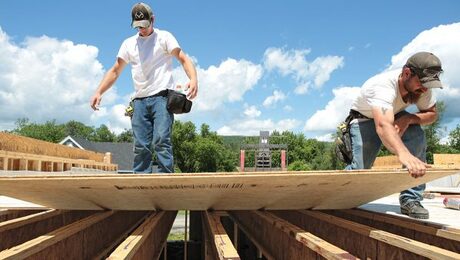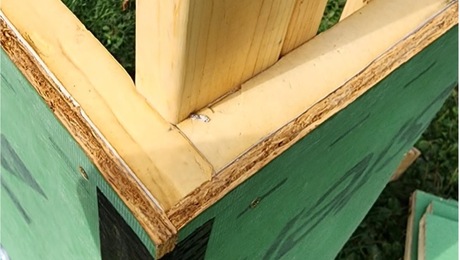Insulating Deep Truss Cavities — Thermal Bridging
I’ve not been able to find much info on the thermal bridging penalty of heavily exposed trusses/rafters.
The heel trusses for my mono slope house end up leaving ~24″ cavities between the roof deck and the finished ceiling (drywall or t&g). In climate zone 3A, I need to hit R38 or higher.
With 11″ of 3.7 open cell foam, that gets to R40.7 of insulation. But 13″ of the bottom of the truss will be fully exposed to the air between the open cell foam and the ceiling.
How significantly does this impact the total r-value of the roof assembly? And are there strategies to solve for this issue?
I’m doubtful 24″ of open cell foam is the right answer, not that I could afford it anyway!
GBA Detail Library
A collection of one thousand construction details organized by climate and house part









Replies
Softwood framing lumber is usually around R-1.1 to R-1.2/in. That's calculated across the grain, since that's the typical orientation. The R-value is somewhat lower along the grain, as you would have with truss webs, but assuming somewhere around R-1.0 to R-1.2/in should be accurate enough for most purposes.
What really matters is how the whole system performs, which depends on how much area of wood is exposed and its proportional contribution to the assembly R-value (or U-factor).
Michael,
Thank you! So is every sq inch of exposed wood a thermal penalty? 12” of exposed truss between end of foam and beginning of drywall. 16 trusses. 60ft long. 2x6s.
How would I calculate the total r of that roof assembly?
Yes, wood is an insulator but not a very good one. Codes are set up for nominal R-value, but if you want to find the actual R-value of the whole assembly, there are a few steps. I can't find the GBA article that covers it but the comments here should help: https://www.greenbuildingadvisor.com/question/effective-insultation.